Hunter Sight-In and Practice Tips
By Mark Cousins
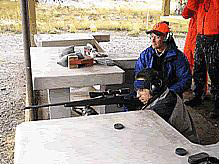 While hunting seasons come around once a year, proper hunting preparation is a year round activity. The off-season months should include hunting preparation and planning, equipment checks and maintenance, as well as practicing with your hunting gear and spending time at the range shooting. When it comes to shooting, spending time at the range practicing really can make you a much better shot and give you the confidence you need when you finally get to put the crosshairs on an elk. This article will take a look at some things that can really help get hunters properly prepared. Before heading to the range be sure and take the time to really check your firearm; sights or scope, scope bases and rings, sling swivels and the overall condition of the stock. Are all of the screws tight? Is the firearm clean? Make sure that the scope and crosshairs are level and that the sling is in good condition. If you have any concerns, be sure to take your rifle to a gunsmith and have it checked out before you expend a bunch of time and ammunition. Once you have your gear ready to go, it’s time to start practicing. Some of your practice can be done at home. Before handling firearms in the home, always be absolutely certain that the firearms are unloaded and that no ammunition is in the same room where you are practicing! Once all the safety precautions are taken, you can begin practicing the various shooting positions that you will use in the field. Hunters should always try to use a solid, supported or braced shooting position in the field to help ensure good shot placement. Good shooting positions use skeletal support since bones don’t get shaky and tired like muscles do. Shooting sticks and bipods are great shooting tools and we’ll also take a look at them.
While hunting seasons come around once a year, proper hunting preparation is a year round activity. The off-season months should include hunting preparation and planning, equipment checks and maintenance, as well as practicing with your hunting gear and spending time at the range shooting. When it comes to shooting, spending time at the range practicing really can make you a much better shot and give you the confidence you need when you finally get to put the crosshairs on an elk. This article will take a look at some things that can really help get hunters properly prepared. Before heading to the range be sure and take the time to really check your firearm; sights or scope, scope bases and rings, sling swivels and the overall condition of the stock. Are all of the screws tight? Is the firearm clean? Make sure that the scope and crosshairs are level and that the sling is in good condition. If you have any concerns, be sure to take your rifle to a gunsmith and have it checked out before you expend a bunch of time and ammunition. Once you have your gear ready to go, it’s time to start practicing. Some of your practice can be done at home. Before handling firearms in the home, always be absolutely certain that the firearms are unloaded and that no ammunition is in the same room where you are practicing! Once all the safety precautions are taken, you can begin practicing the various shooting positions that you will use in the field. Hunters should always try to use a solid, supported or braced shooting position in the field to help ensure good shot placement. Good shooting positions use skeletal support since bones don’t get shaky and tired like muscles do. Shooting sticks and bipods are great shooting tools and we’ll also take a look at them.
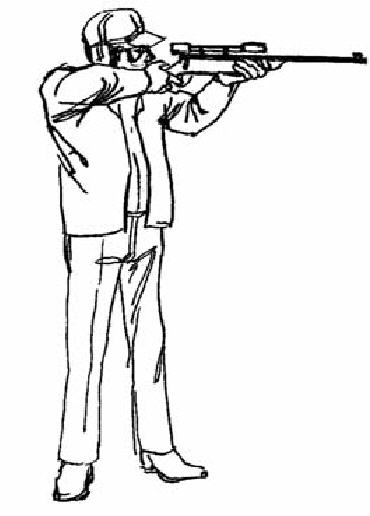 |
Offhand or Standing is the least stable of the shooting positions and shouldn’t be used for shots at big game if it can be avoided. |
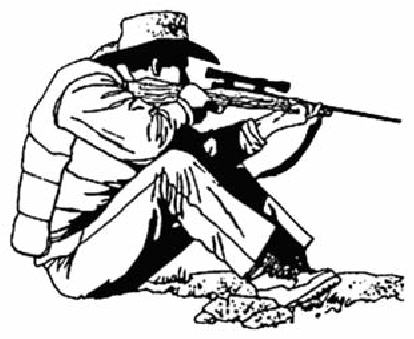 |
Sitting allows both elbows to be supported by the knees which results in a very stable shooting platform. This is another great position for hunting shots. |
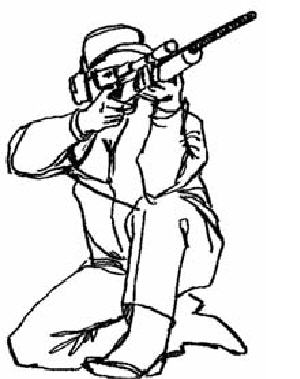 | Kneeling is more stable and gives good skeletal support with the elbow supported by the knee. Kneeling is a great position to use in the field. |
|
Prone is the most stable of the shooting positions and provides maximum support for the shooter. In the field, prone may not allow shooting over obstacles or brush and may be difficult in the snow. |
Hunters should practice the various shooting positions while wearing their hunting clothing and gear. Pack straps and heavy coats can affect how the rifle fits and make some positions more difficult than others. Wearing a shooting shoulder pad can help make the rifle fit like it does when wearing heavy hunting clothing and has the great added benefit of reducing felt recoil, making range sessions much more fun. Know what works before you go! Shooting sticks and bipods help provide great support for hunting shots. It is important to practice with them before going hunting. If you install a bipod on your rifle, sight in with it attached to the rifle to be sure your point of impact doesn’t change. Once you are comfortable with the shooting positions and other gear, it’s time to head to the range and do some shooting from the different positions.
At the range, hunters should do the initial sight in from the shooting bench. The “zero” or sight in range varies from hunter to hunter and the terrain they will be hunting in, but most tend to sight their rifles in for a zero range of around 200 yards, which means that the bullets will hit where the crosshairs are at 200 yards.. With most hunting calibers, the bullet will be about 1 ½” to 2” high at 100 yards, dead on or zeroed at 200 yards and around 9” or so low at 300 yards. This allows a hunter to hold in the center of the vital zone on an elk from 100 yards to just over 200 yards and not worry about bullet drop as the bullet will be in the vital zone with this center hold. The vital zone of an elk is over 12 inches in diameter, which gives the hunter some margin of error if they misjudge the range.
Once you have your rifle sighted in from the bench, the real hunting practice begins. Hunters need to practice shooting from actual field hunting positions such as sitting or kneeling, and from shooting sticks or bipods. Hunters should also practice on targets that prepare them for the field. Check out the hunting catalogs or go by the big sporting goods or archery shops and pick up some animal targets for even better range time. If you don’t have animal targets, pick up some bulls eye targets with a 10 to 12 inch bull’s-eye instead of the small rifle sight in targets so that you have an aiming area about the size of the vital zone. Using too small of an aiming point can lead to forcing the shot and makes the natural wobble you will experience look larger than it really is.
Wobble – yes you will wobble when shooting from real hunting positions - it is natural and you must learn to accept it. By practicing, you will find out which shooting positions offers the best support and the least wobble. You will also see that even with the wobble, you can still keep your shots within “minute of elk” or within the vital zone. The more you practice, the better prepared you will be when hunting season arrives!
Some more tips:
When you purchase ammo for sighting in, always get another box of the same ammo for hunting with. Too often, hunters grab a box for sighting in and then can’t find another box of the same ammo when they start packing for the hunting trip. Ammunition with different bullets and bullet weights won’t shoot the same.
 Another great way to become a much better shot is to set up a practice hunting rifle that doesn’t have much, if any recoil, and is cheap to shoot. The best way to do this is to find a .22 long rifle, .22 magnum or a .17 caliber rim fire bolt action rifle and set it up like your big game hunting rifle. I have three practice rifles (had to, my daughter latched onto the first one and I didn’t get to shoot it anymore!) in .22 long rifle and .22 magnum that I use to practice with and to use when working with new hunters and youth. Practicing with a .22 rifle takes the recoil and blast out of the equation and lets the hunter really practice the basics of good sight picture, sight alignment, breath control, trigger press and good follow through. Using a .22 along with one of the many steel or polymer reactive targets on the market is a blast and you will find yourself doing much more practice than ever before. A decent little .22 bolt action rifle and a scope won’t set you back much more than 4 or 5 boxes of premium hunting ammo would, and you can shoot them for pennies a round. Take a look at these pictures and you’ll see how similar the “practice rifles” are to the hunting guns; .22 lr, .22 magnum and my 30-06.
Another great way to become a much better shot is to set up a practice hunting rifle that doesn’t have much, if any recoil, and is cheap to shoot. The best way to do this is to find a .22 long rifle, .22 magnum or a .17 caliber rim fire bolt action rifle and set it up like your big game hunting rifle. I have three practice rifles (had to, my daughter latched onto the first one and I didn’t get to shoot it anymore!) in .22 long rifle and .22 magnum that I use to practice with and to use when working with new hunters and youth. Practicing with a .22 rifle takes the recoil and blast out of the equation and lets the hunter really practice the basics of good sight picture, sight alignment, breath control, trigger press and good follow through. Using a .22 along with one of the many steel or polymer reactive targets on the market is a blast and you will find yourself doing much more practice than ever before. A decent little .22 bolt action rifle and a scope won’t set you back much more than 4 or 5 boxes of premium hunting ammo would, and you can shoot them for pennies a round. Take a look at these pictures and you’ll see how similar the “practice rifles” are to the hunting guns; .22 lr, .22 magnum and my 30-06.
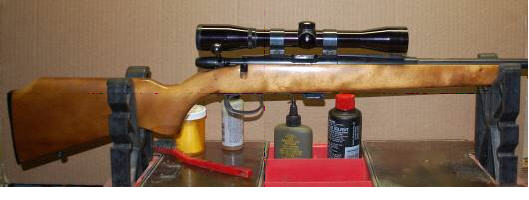
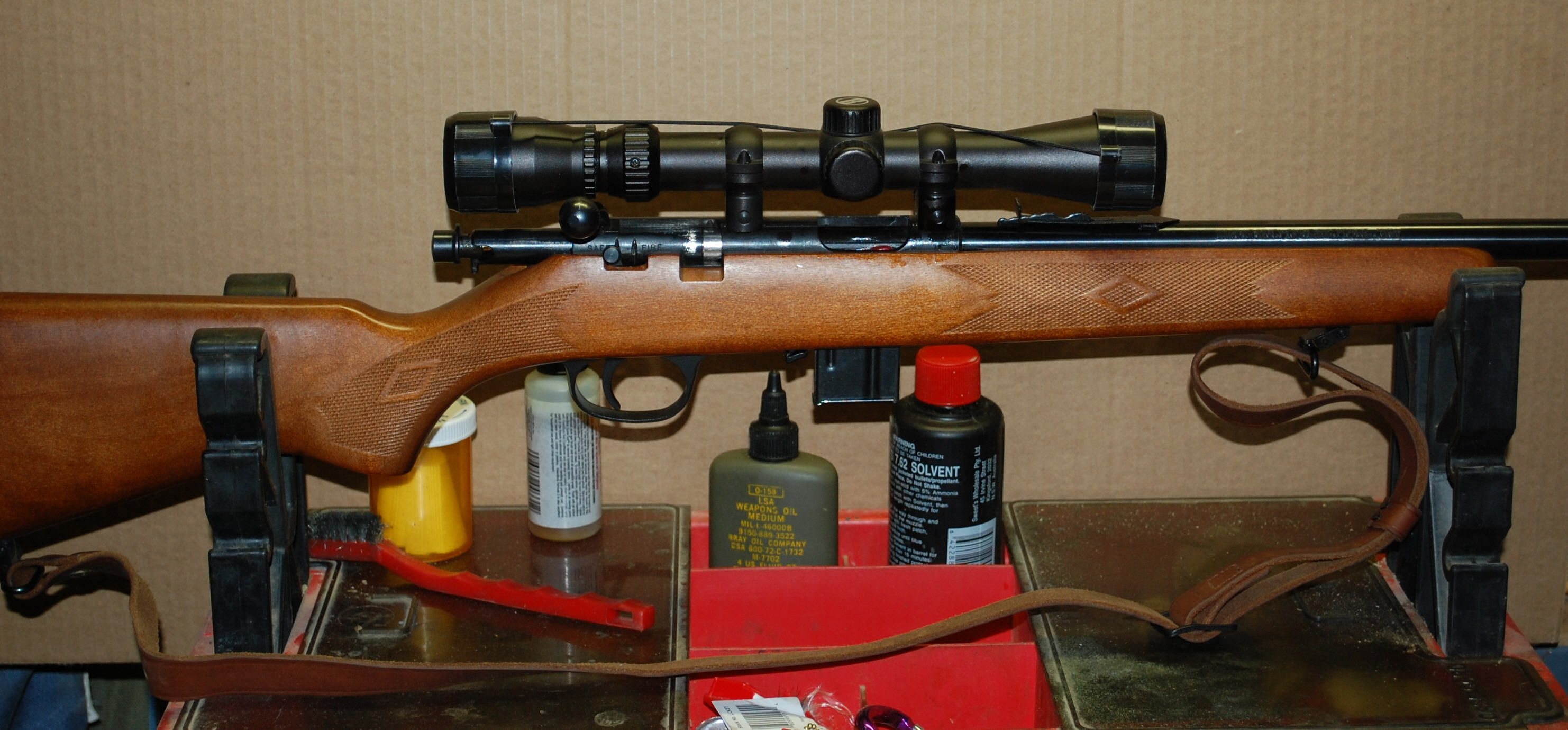
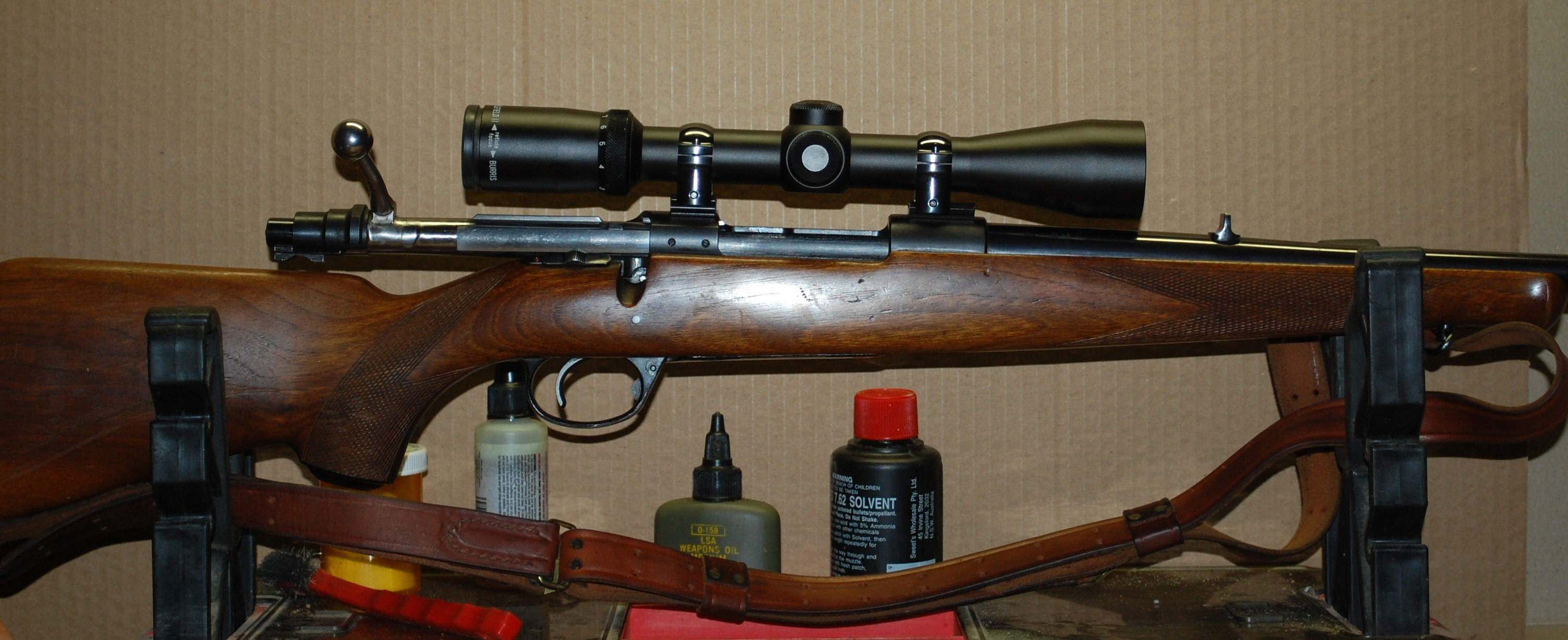
When sighting in and practicing with your hunting rifle, you might notice that you are getting a bit of a flinch, jerking the trigger and anticipating the recoil. When this happens, grab your practice rifle and shoot a few groups without the recoil. It will really help your concentration and help prevent bad habits from forming. This is a handy trick I’ve shown to many a shooter at the range and it really helps. I like shooting some fairly big guns that have significant recoil and I use my practice rifles on a regular basis during range sessions to keep my basics solid – you can only take the recoil of so many .416 Taylor rounds before flinching sets in and the groups get bigger.
Put a sling and bipod on the practice rifle, grab your shooting sticks and a couple hundred rounds of .22 and head out to the range – you will be better prepared than ever when hunting season rolls around.
Good practice, and lots of it, will help make for a successful hunt!
Hunt Safe!

